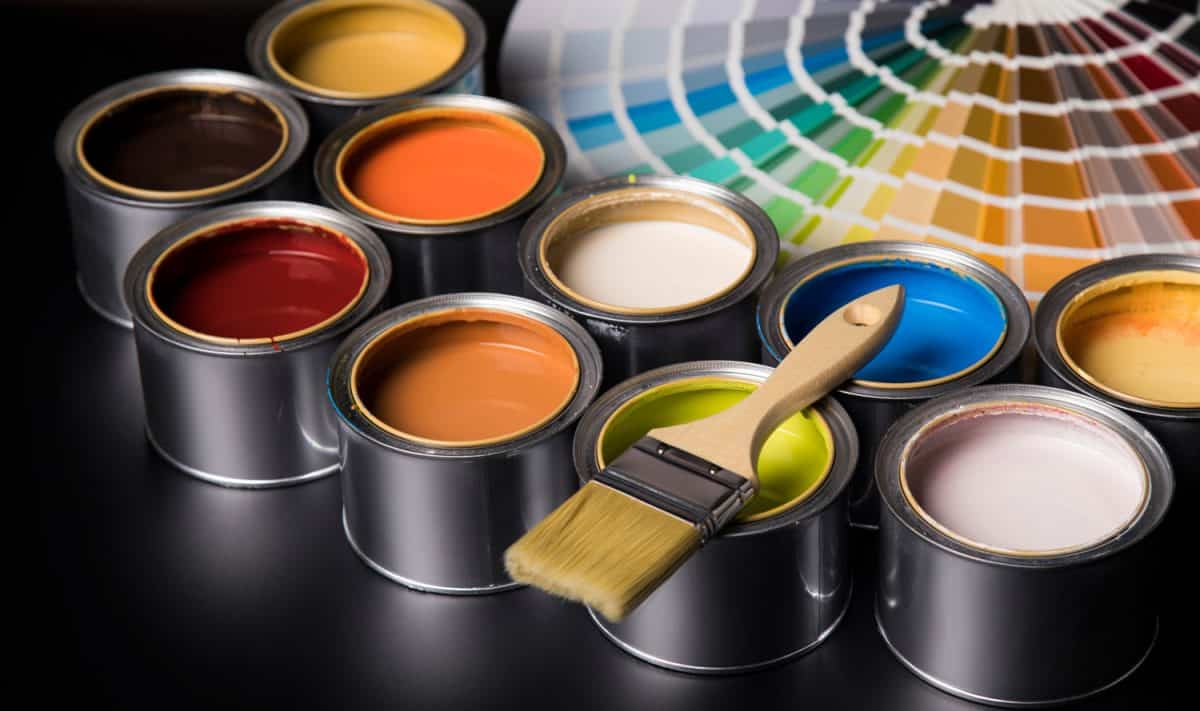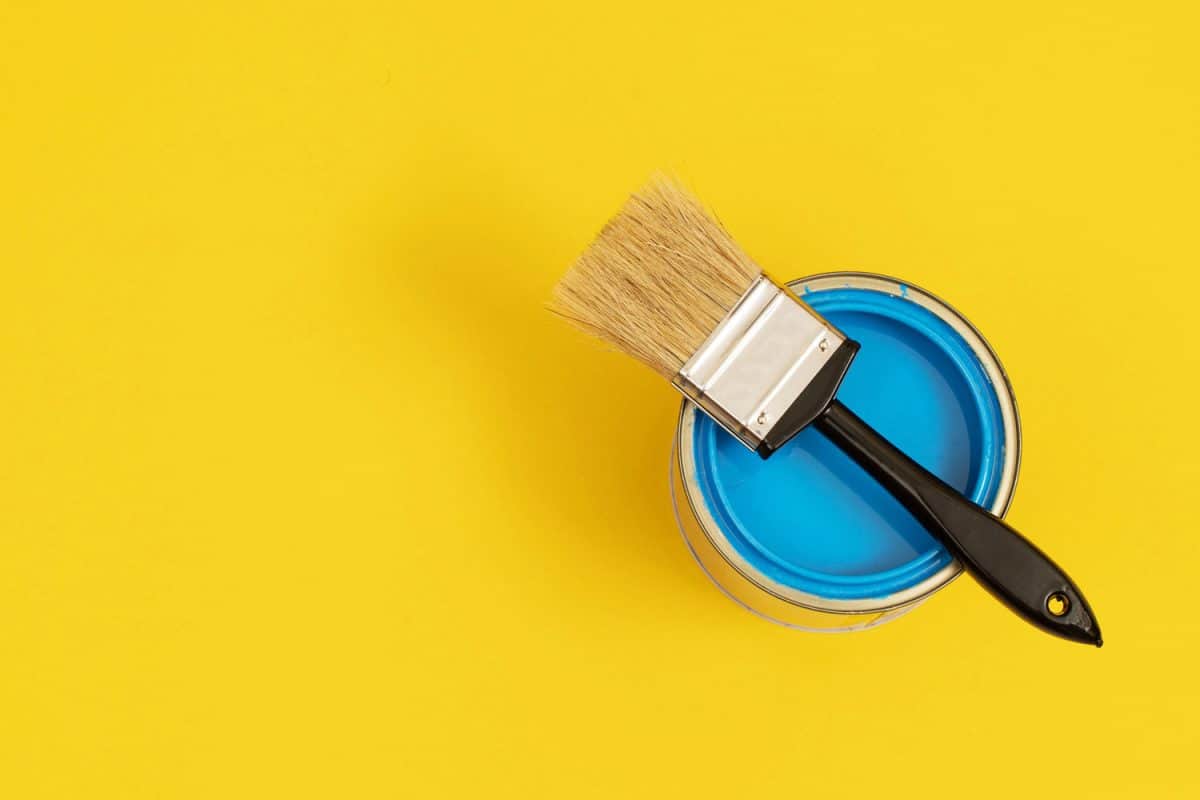If you're thinking about painting the walls of your house, the type of paint that you use matters most, aside from the color. Choosing the wrong kind of paint can cost you a lot. Today, we're going to address the question of whether you can use acrylic paint on the walls inside and outside your home. We asked paint experts, and here's what they said.
You can use acrylic paint on your indoor and outdoor walls. This paint is versatile and can adhere well to most surfaces such as wood, plastic, and metal -among others. Some of its exceptional qualities include being water-resistant, easy to maintain, able to contract without breaking, long-lasting, and having high elasticity.
Continue reading so we can tell you more about acrylic paints and what makes them great to use for your indoor and outdoor walls. We'll also answer if acrylic paint is toxic and how long it will last outside. We'll also give you tips on how to make the acrylic paint on your walls last longer. Let's get started!
![Young asian happy woman painting interior wall with paint roller in new house, Can You Use Acrylic Paint On Walls [Indoor And Outdoor Applications]](https://uooz.com/wp-content/uploads/2022/01/Can-You-Use-Acrylic-Paint-On-Walls-Indoor-And-Outdoor-Applications.png)
Is acrylic paint indoor or outdoor?

Painting the walls doesn't just give color to your house. It is important in sealing off moisture, preventing water damage, corrosion, insects, and the buildup of molds.
It also helps improve the air quality in your home by repelling dust, dirt, and other particles that can trigger your allergies. Paint also makes it easier to clean your walls and make them last longer against wear and tear.
However, the kind of paint that you use will have an impact on all of these. Experts say that excellent quality paints have the right proportion of binder, pigment, extender, solvent, and additive for you to harness all the benefits that paint has to offer.
If you use the wrong paint, it won't bond with the wall's surface properly, which defeats its purpose. It could also be incompatible with your current paint resulting in a paint failure. In the end, you'd have to redo the job and buy another paint, which means added costs and more hassle for you.
That's why it is important to know which type of paint you should be using for each specific application. There are paints specifically formulated for indoor or outdoor use. There are also different kinds of paint on the market but they can all be classified into two: water-based and oil-based.
Acrylic Paint Applications
Acrylic paint is water-based. This type of paint is more durable than oil-based, doesn't or has low emission of harmful fumes, dries faster, and can withstand changing environmental conditions better.
Of course, oil-based paints also have their own benefits, such as being more resistant to dirt. Their inherent properties will help users determine which paint type is best to use on particular applications.
Acrylic paints are in a class of their own. They are very versatile and can be used on various surfaces found inside or outside your home. For example, use acrylic paints on your exterior roof or interior ceiling and even on your vehicles.
Acrylic paints can be applied to wood, metal, plastic. This is what makes them unique. Choosing this type of paint eliminates the confusion regarding which paint to use in particular areas of your home.
Water-based Paint Properties
As water-based paint, acrylic paint is made up of pigment particles that are suspended in an acrylic polymer emulsion. But once you apply this paint to your wall, the water is absorbed by the surface, or it evaporates into the air.
When this happens, the acrylic polymer particles bond with each other, and the pigment is trapped in place. The result is a water-resistant and long-lasting color on the surface.
Acrylic paint is very elastic and can expand on the surface so you can cover more area. Although it will also contract when the temperature changes, it won't split and break.
Acrylic paints are also easy to maintain. Just clean the surface using soapy water, and it'll look like new again. This is good news whether you apply it to your indoor or outdoor wall as you want to make sure that the paint lasts and looks good all the time.
Check out this acrylic paint on Amazon.
Is acrylic paint toxic?

Paint Safely
- Wear personal protective gear. There may also be fine particles when you're sanding the surface, and these can be harmful to your lungs when you inhale them.
- Ventilation is important. When working indoors, open the windows and doors to allow the air to flow outside.
How long will acrylic paint last outside?

The paint that you use for your outdoor walls will be exposed to harsh weather conditions. That's why you have to choose a paint type that'll be able to endure the ever-changing environment so that it will last long.
As mentioned earlier, acrylic paint is durable. As long as it is applied properly and you give it sufficient time to dry, it will stick to most surfaces for good. Experts say that acrylic paint can last anywhere between 5 and 10 years. It is also waterproof so its color won't be washed off by the rain.
But you can also help make acrylic paint last longer by varnishing it or applying an acrylic coating. These products contain resin, oil, solvent, and driers that all work together to make the surface waterproof.
They will help make your acrylic paint better able to prevent water damage and reduce fading over time. They give the paint added resistance against the harmful UV rays. This way, you can be sure that your outdoor wall paint will last longer.
Find this acrylic coating on Amazon.
Final Thoughts

Go ahead and use acrylic paints on your walls. They are safe to use, and you can be sure that they'll last long, make your home look better, and protect it from water and weather damage. Just make sure that you read the packaging label carefully to know how to apply the paint properly and take necessary precautions to mitigate the risks of using paint.
If you also want to read about ceiling paint, you may visit the following links:



